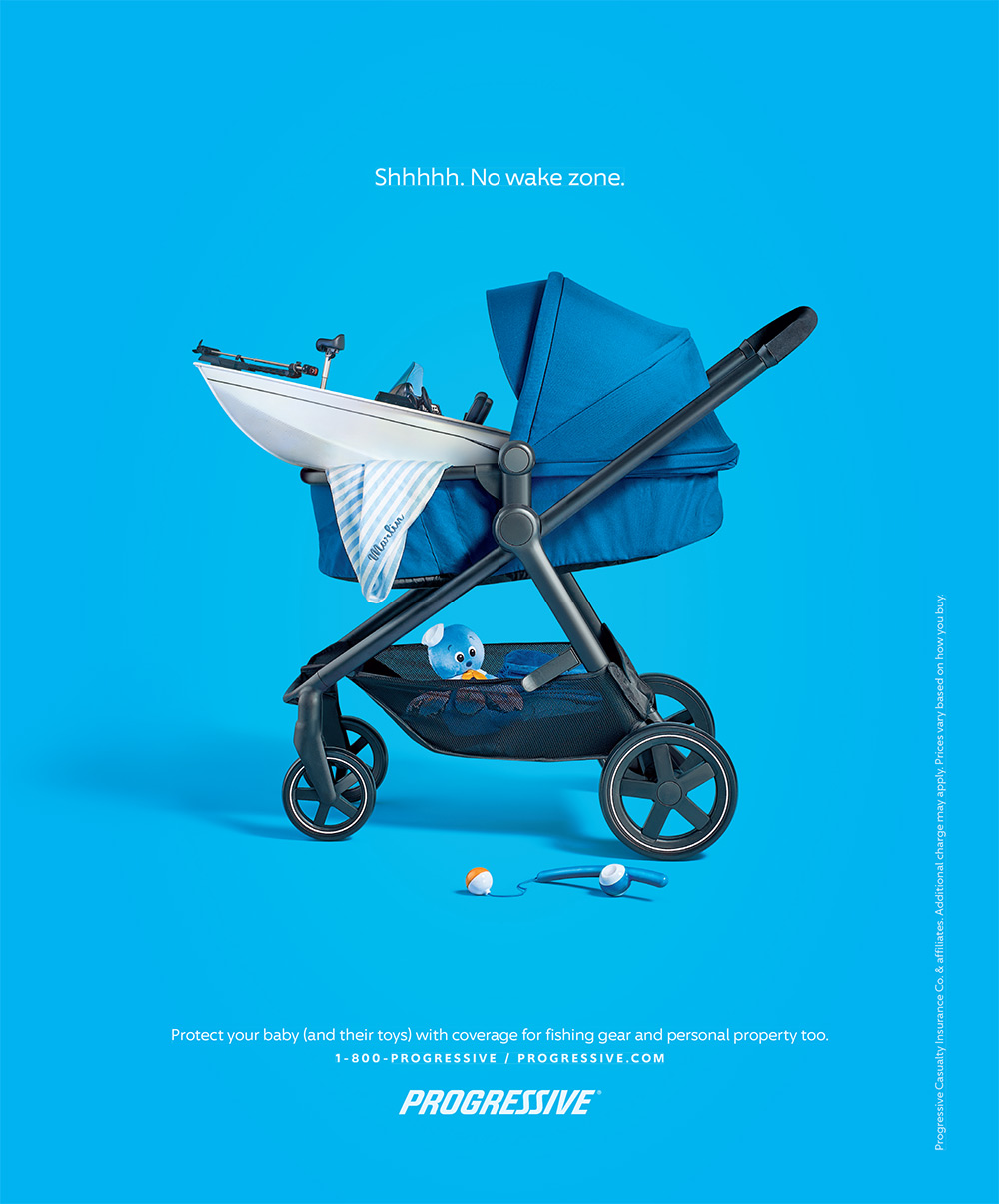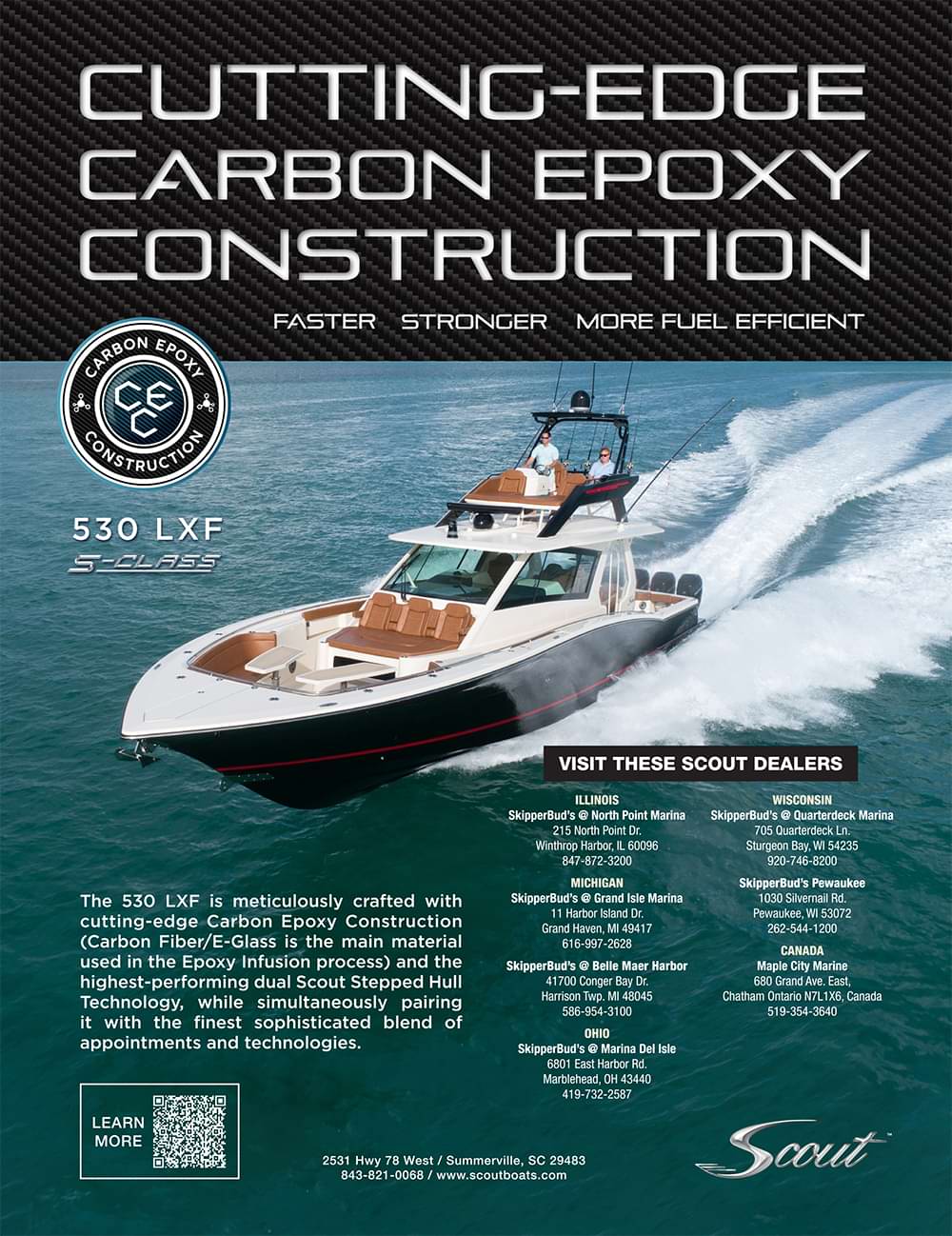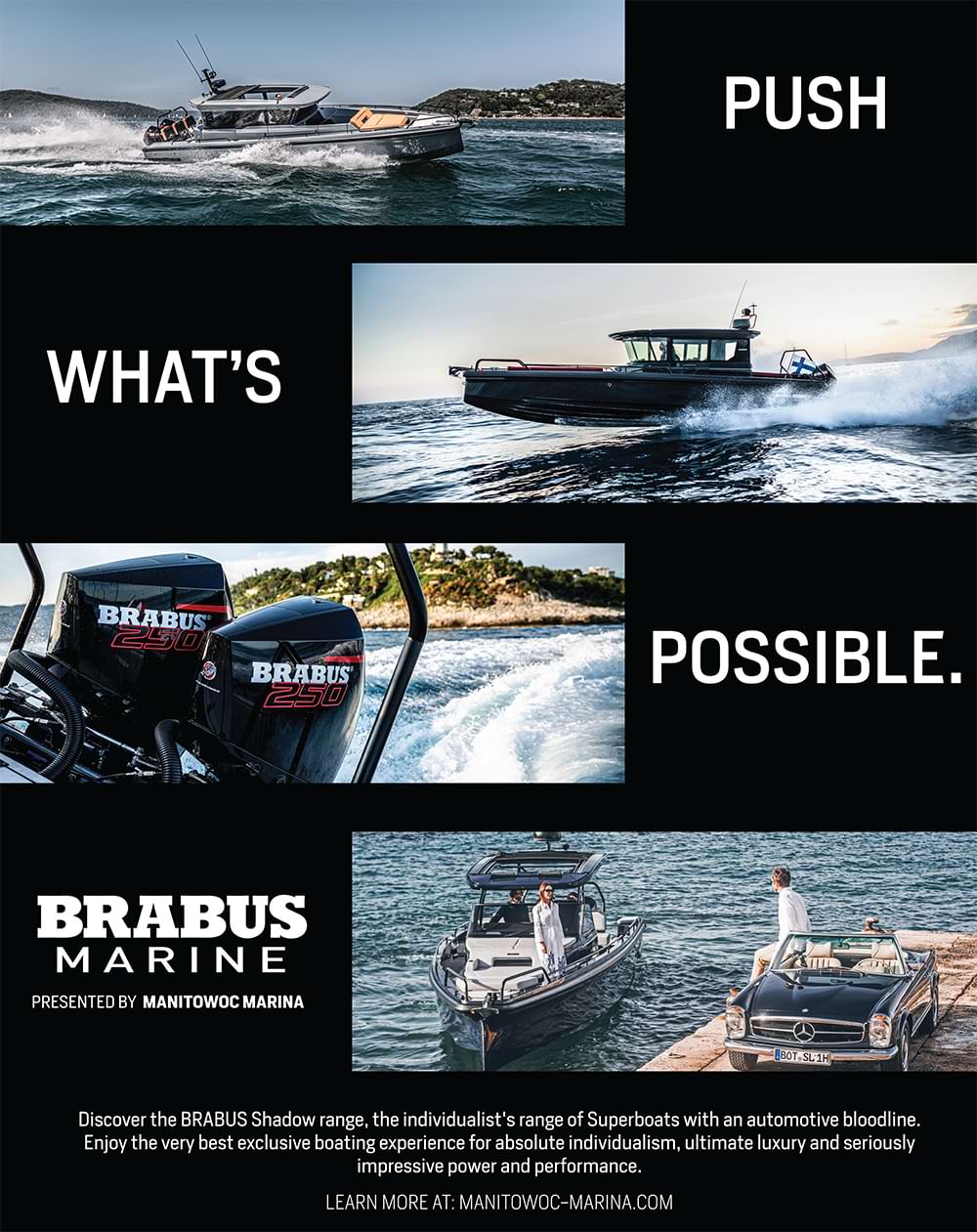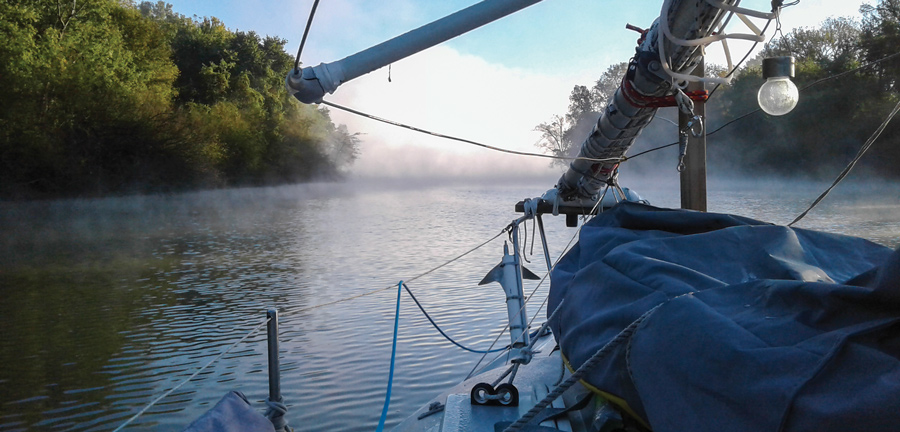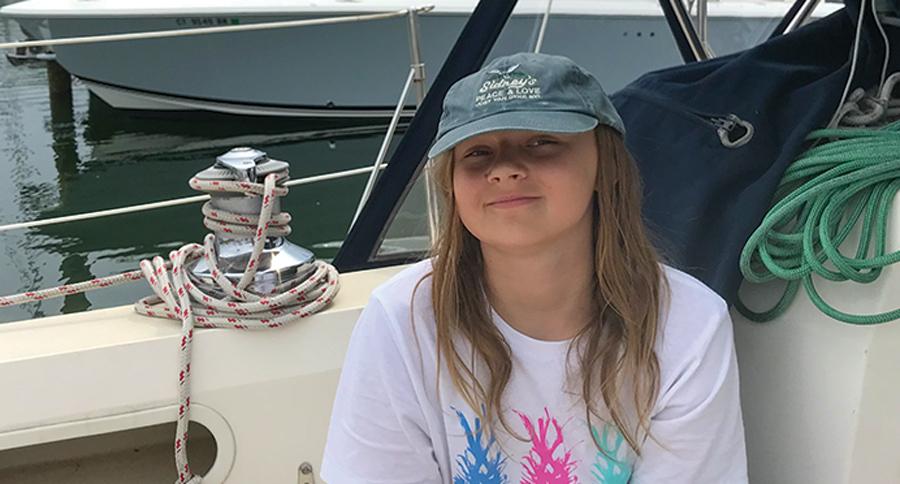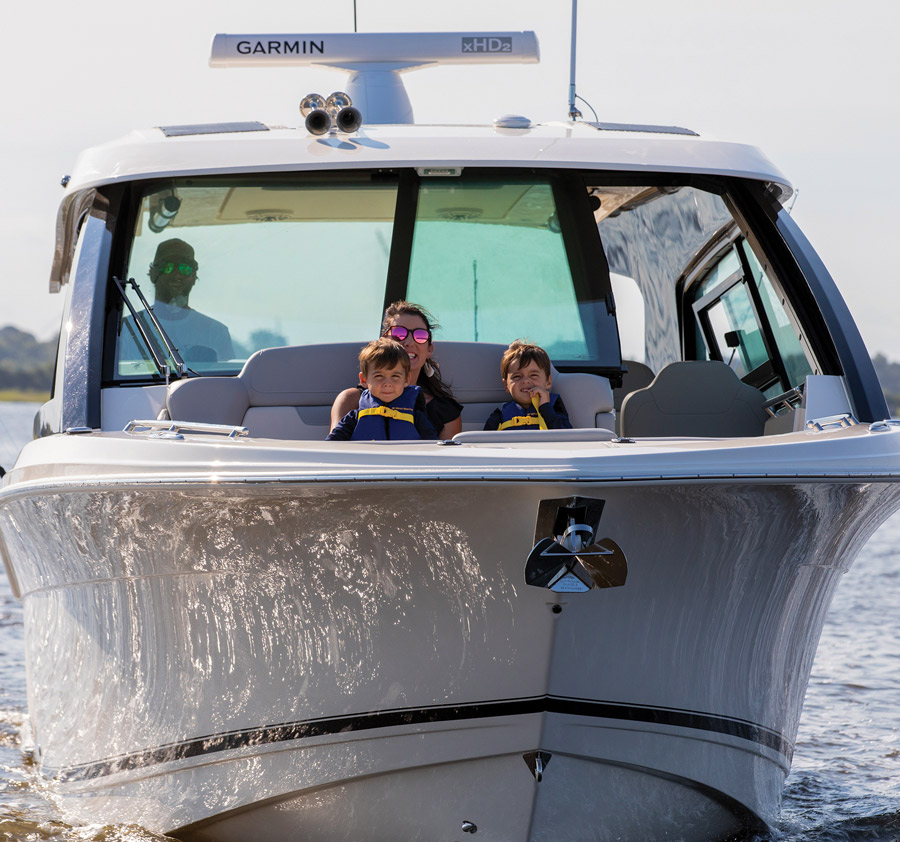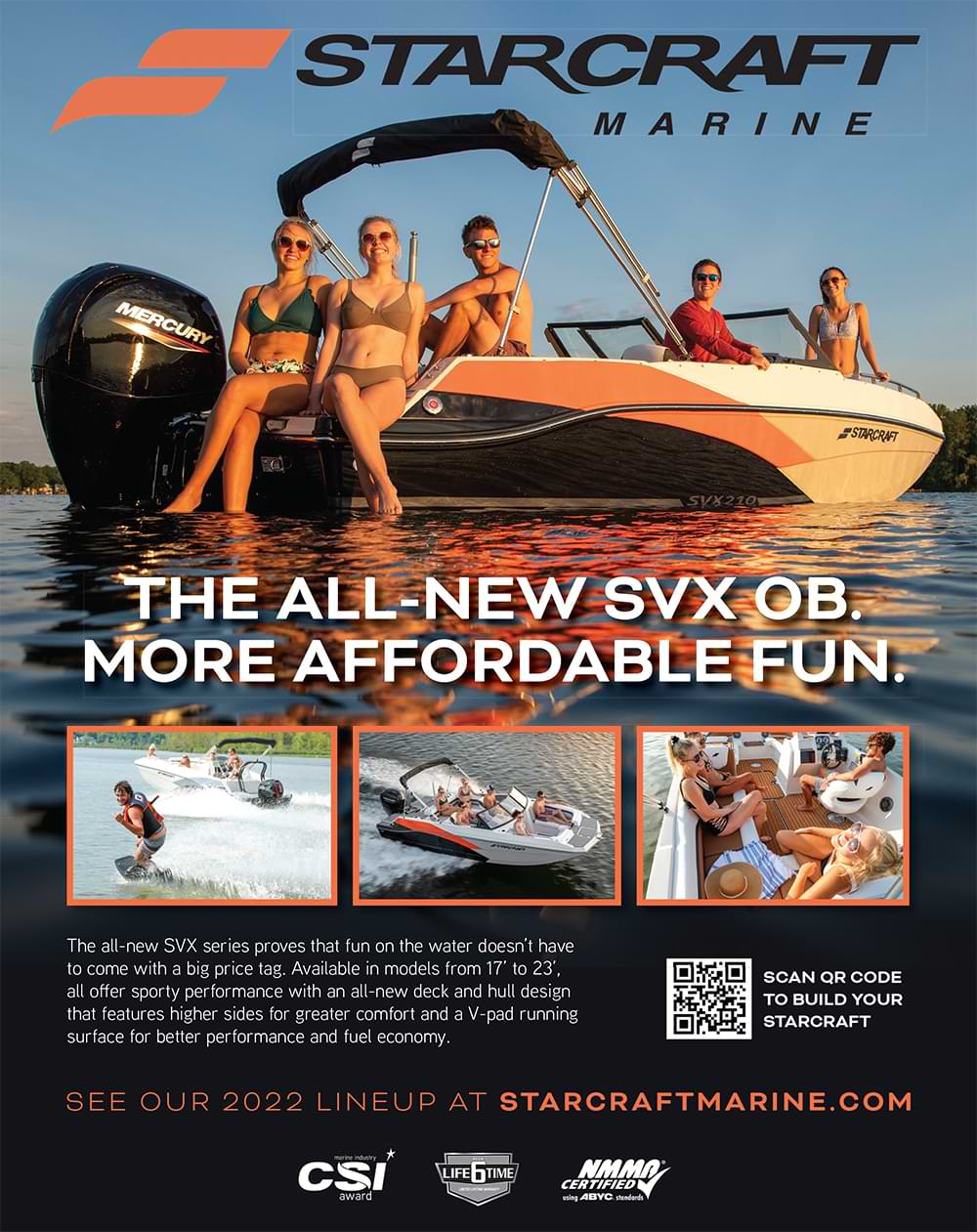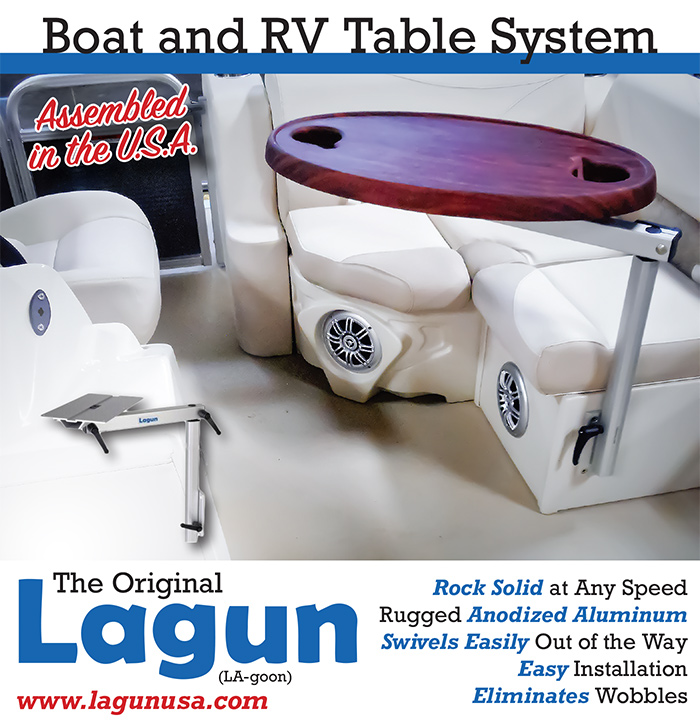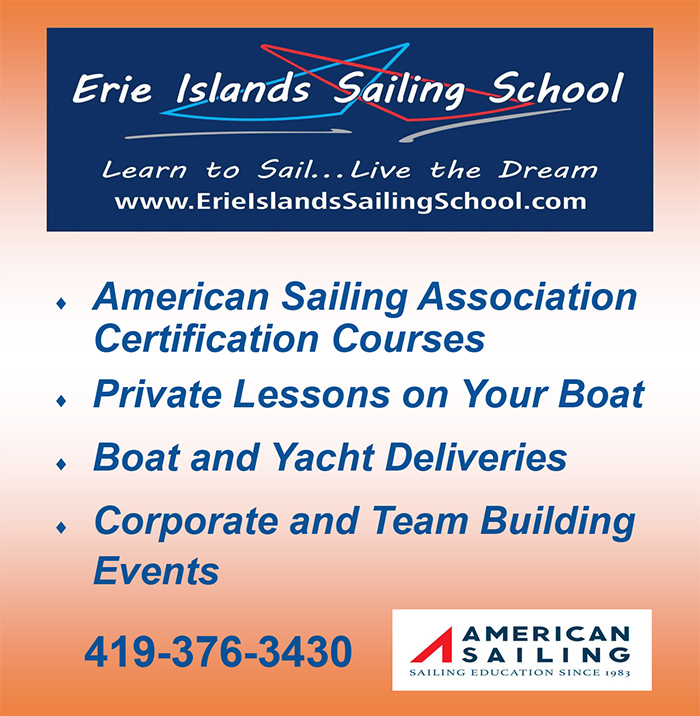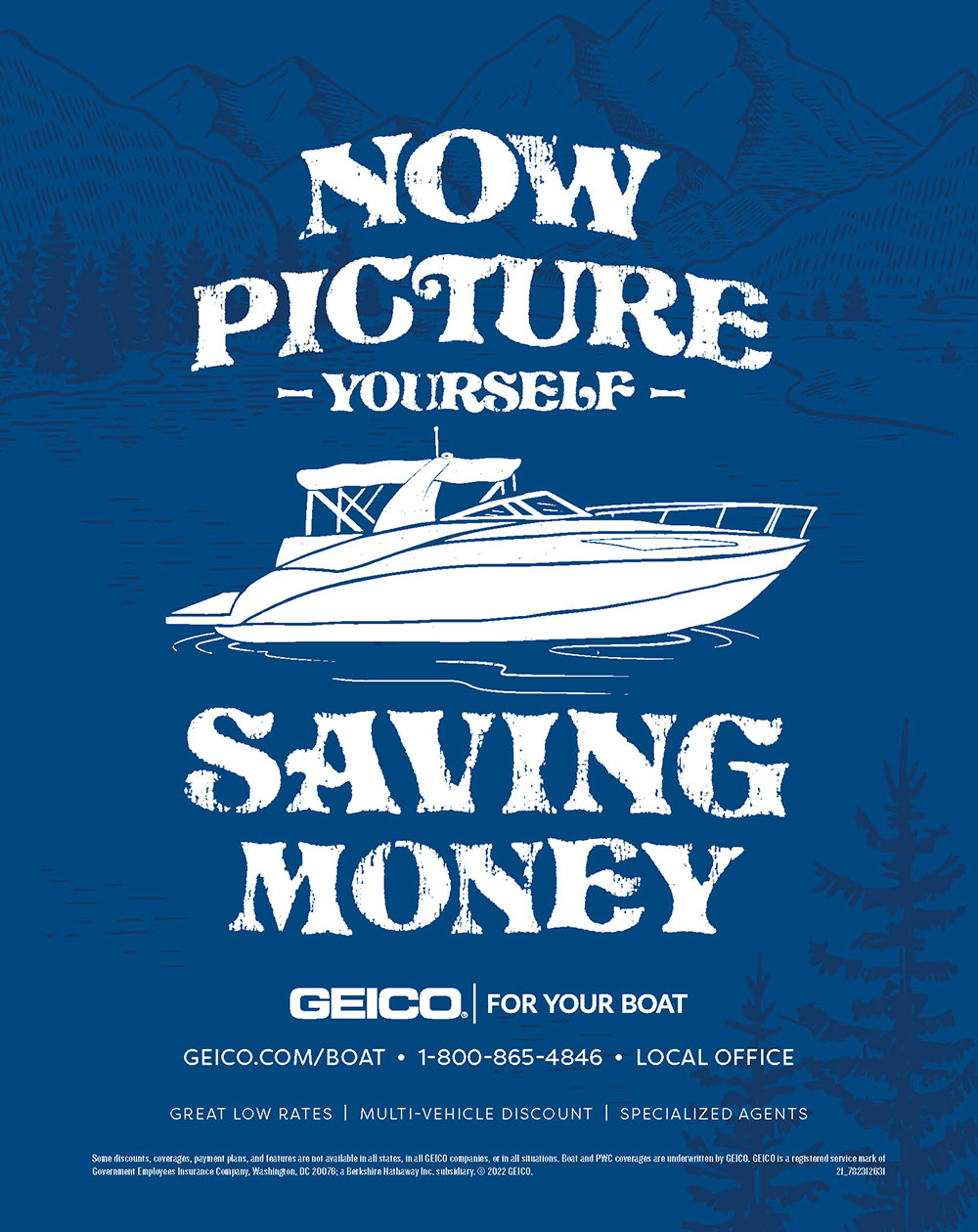
New 350 LXZ Released
Where Marine Technology Is Heading
Discover What Your Boat Is Missing
Putting The Pretoria Shipwreck Back Together
A Look Back On A Great Loop Adventure
Historical Stops Around The Great Lakes
Where Marine Technology Is Heading
Discover What Your Boat Is Missing
Putting The Pretoria Shipwreck Back Together
A Look Back On A Great Loop Adventure
Historical Stops Around The Great Lakes

November 2022
VOLUME 40, NUMBER 6
Spotlights
Harris Publishing, Inc.
Darryl W. Harris — Founder
Jason Harris — President
Chuck Harris — Vice President
Ryan Harris — Vice President
Clayton Ward — Treasurer
Janet Chase — Secretary
Great Lakes Boating
520 Park Ave. Idaho Falls, ID 83402
800-638-0135
Also Publishers Of:
Pontoon & Deck Boat Magazine
On The Cover:
Cover Photo Provided By: Scout Boats
Cover Design: Janet Chase
Executive Editor | Brady L. Kay
Assistant Editor | Heather Magda Serrano
Editorial Staff
Dan Armitage, Tim McKenna,
Roy Sparks, Ethan Hunt, Ryan Beaty
Joan Wenner, J.D., Iris Corbett
Advertising Director | Jason Huff
Advertising Executive | Greg Larsen
Advertising Executive | Robin Witbeck
Marketing Director | Stephanie Woods
Lead Designer | Janet Chase
Production | Jim Donovan
Circulation Director | Chuck Harris


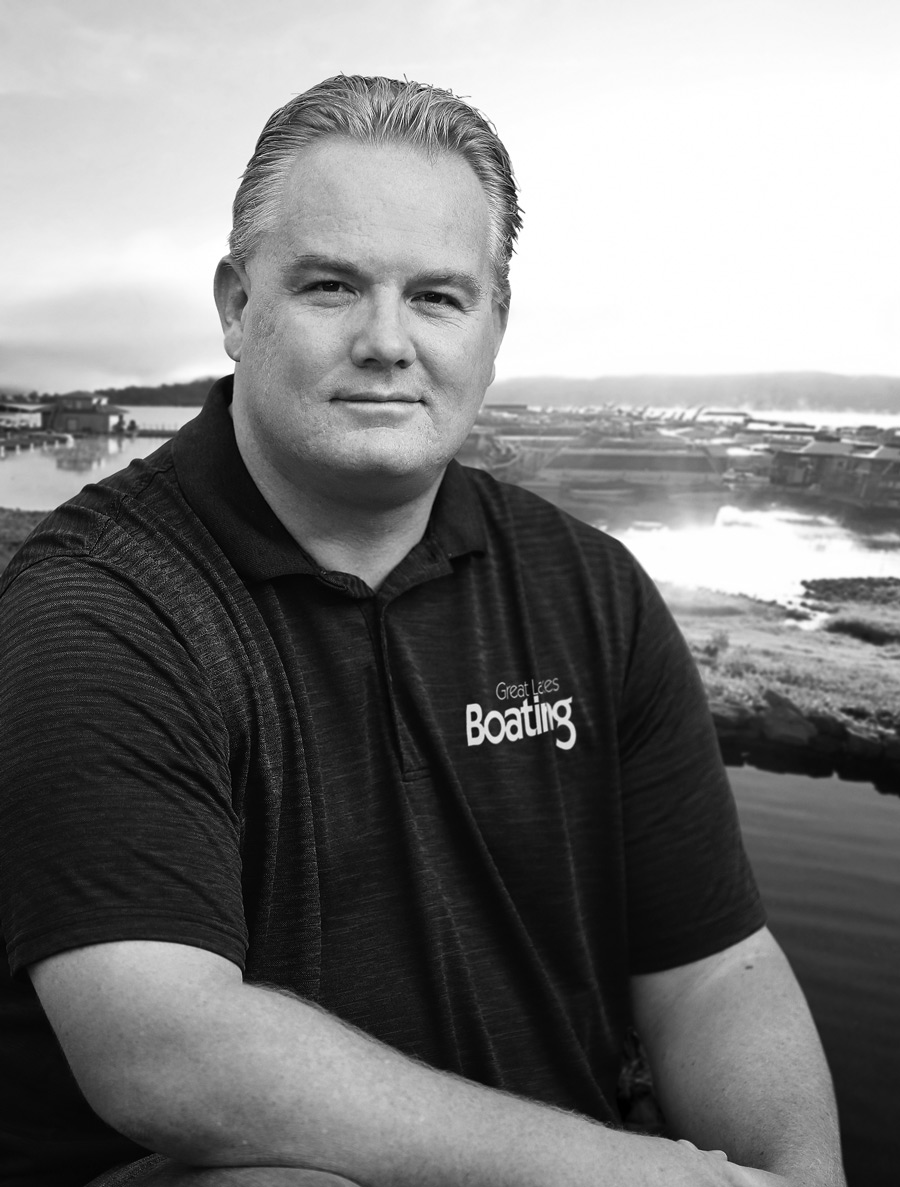

won’t lie and say that I’m ready to welcome in winter. It’s actually quite the opposite. I often find myself wondering why prime summer months such as July and August seem to fly by so quickly, yet January and February in the dead of winter always drag on. I love summer boating season like a fat man loves Sara Lee and I currently find myself in denial that my season is really over. There are probably better ways of coping with this but one way I’ve proven doesn’t work is flipping through photos on my phone of my family and me boating this past summer. If you’re trying to fight your own pre-winter blues you might want to stay off your phone. Just saying.
I understand the need and the importance of winterizing boats, but it still feels very unnatural to me. It’s like admitting defeat and letting Old Man Winter know he’s won as we sadly walk away from our vessels for several months with no plans to return until the weather turns nice once again. And yes, I know there is an obvious solution to this problem, but unfortunately I’m not in a financial position to extend my boating season and instead I “choose” to embrace the Great Lakes winters.
That Time Of the Year
By Tim McKenna
t is the time of year to start thinking about what to do over the cold months. Unless you are into the iceboats, sailing the Great Lakes at this time of year is most likely not in the cards… although we do occasionally get the chance to do a Thanksgiving Day sail. There have been years where we needed to break up the ice surrounding the boat before heading out. Of course, we were also younger then.
The summer of 2022 went too fast for me. In fact, all of 2022 is going too fast. But that is the nature of the beast. The one nice thing about the cold season is that at least there are some boat shows throughout the region. I love that they are making a comeback and drawing some good crowds.
From what I can determine, there are shows scheduled for January in Chicago, Cleveland, Detroit, and Minneapolis. There are also shows scheduled in Indianapolis and Nashville, although my guess is that there are not too many sailboats at these shows.



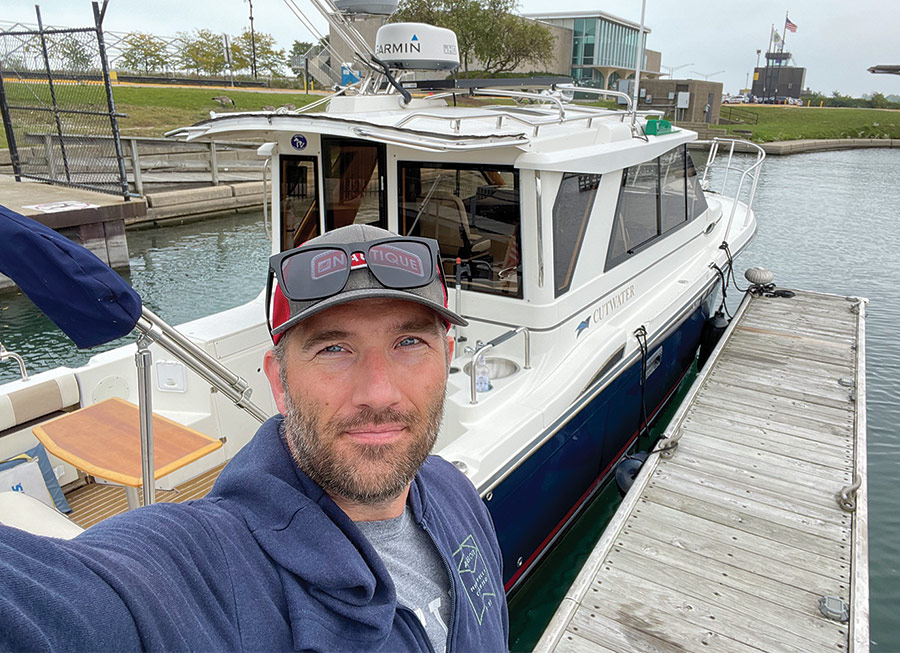

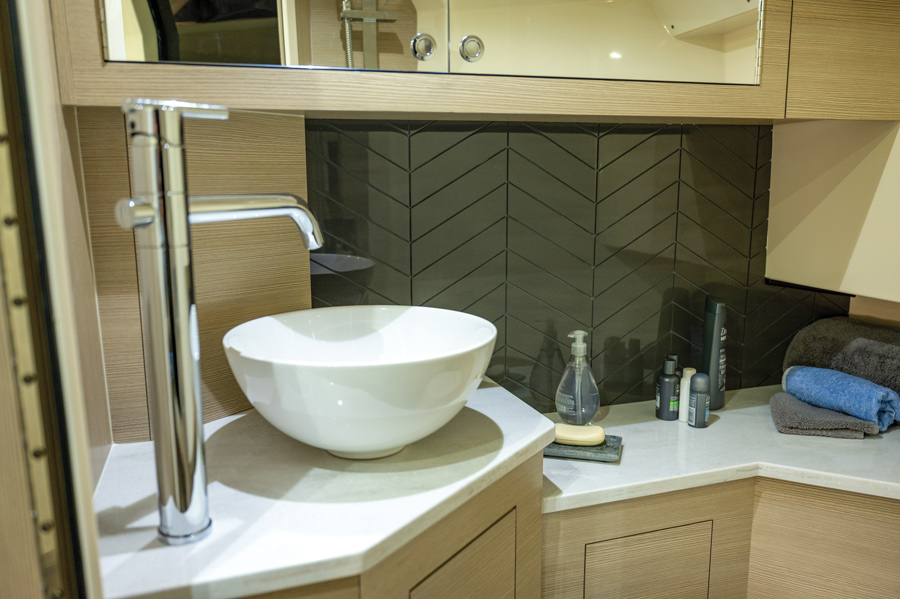
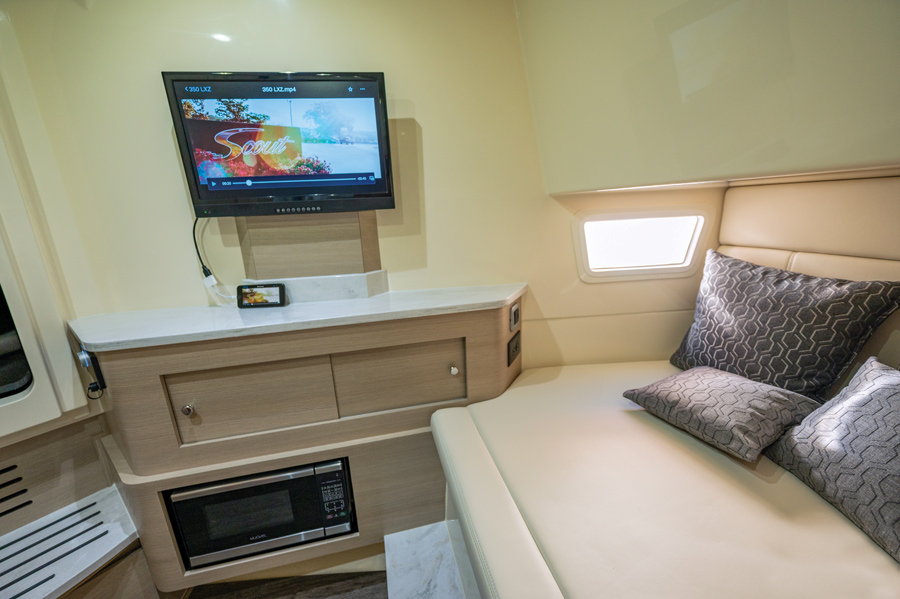
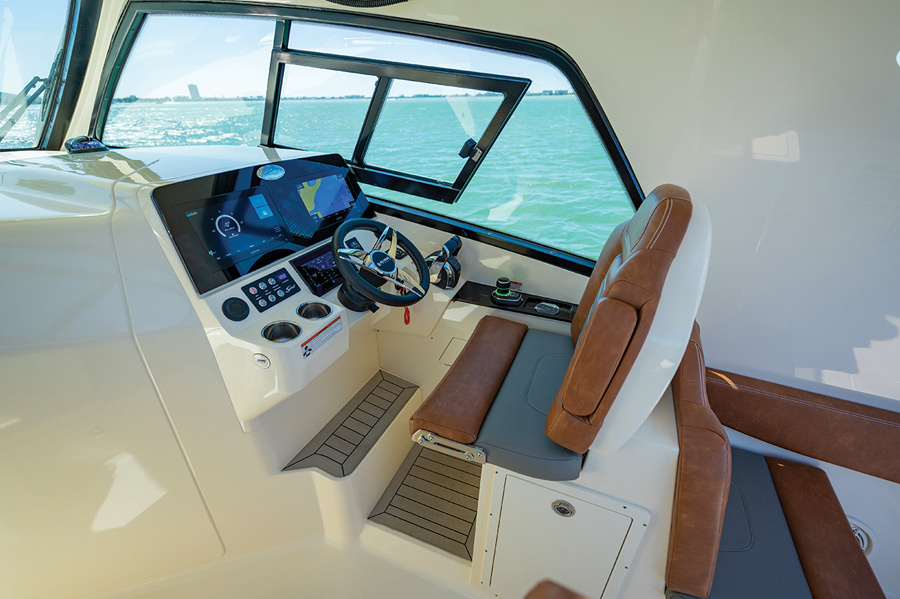
Scout Boats
www.scoutboats.com
350 LXZ Specifications
Length: 34’ 7”
Beam: 10’ 5.5”
Fuel Capacity: 296 gals.
Max Horsepower: 1,350hp
Draft: 26”
The brand-new 350 LXZ S-Class Luxury Crossover model from Scout Boats is nothing short of breathtaking. The model comes as the initial debut of their all-new LXZ Series, making a grand introduction for the new lineup.
Unlike most anything out there on the market today for Great Lakes boaters, this sophisticated high-end day cruiser is perfect for elegant entertainment with overnight accommodations that allow you to extend your Great Lakes excursion.
Rick Williams, the general manager and Scout brand manager at SkipperBud’s in the Grand Haven, Mich., location, admires everything the new LXZ model has to offer.
enry Krzemien is one of the most notable adventurers out there today. He enjoys everything from hiking, kayaking, cycling, and sailing, to everything in between. But most notably, he has taken on the Great Loop and completed the 10-month-long journey in 2017. He made the entire loop aboard a 22-foot weekend coastal sailboard, a Spindrift 22 designed by Jim Taylor that Henry owned for 28 years prior to casting off from Cedar Point Marina in Sandusky, Ohio, to start the loop. And with an extra 9.8hp outboard motor and a shoal keel and centerboard to give him better maneuverability, he got to know her intimately well as they fought the inevitable storms and nasty weather across the 5,277 miles up the Great Lakes, down the mighty inland rivers, up the Gulf of Mexico, through the state of Florida, up the east coast and the Chesapeake Bay, and up the Hudson over the Erie Canal back to Lake Erie’s western basin to cross his wake.
“I should mention I did have a constant companion along: a reluctant stray kitten I named Mickey,” Henry said.
It wasn’t originally part of his master plan. Henry had a neighbor willing to watch the cat, but a few days before departure the neighbor was unable to care for him, so Mickey became his crew. It’s safe to assume that Mickey the cat has seen more of the country and its vast waters than most people. And it turns out that the rascal of a furball had adventures of his own. There were many nights Henry’s first mate would be off on unauthorized shore leave where Henry had to go out and look for him. Somehow, they both managed to get through unscathed.
Regarding his inspiration for boating, Henry says he grew up in the shadow of Robert Manry, a well-known northeast sailor who was renowned for crossing the Atlantic Ocean in a small 13 ½-foot sailboat, the Tinkerbelle. The sailboat resides at the Western Reserve Historical Society in Cleveland.
“I’ve seen it once and was awestruck by her small size. That may have been the seed that was planted in my mind,” Henry recollected.
As for the Great Loop, he had heard of the venture among the boaters online in various Facebook groups, but the idea didn’t get serious until his wife, Colleen, passed away in 2015.
“We had 42 years of wedded bliss, and in a quick moment she was gone,” Henry elaborated.
Henry says that trying to put his life together was difficult. One snowy evening, he recalls doing the dishes and looking out the window when he thought he heard his name being called by the sailboat which was under a snow-covered tarp in the backyard. And just like that, the seed that was planted years ago began germinating.
It may be worth mentioning the sailboat was named after Henry’s wife. Her first initial was C and her middle name was Marie—the Sea Marie. The Sea Marie is a gracious lady that Henry says will always be a part of him.

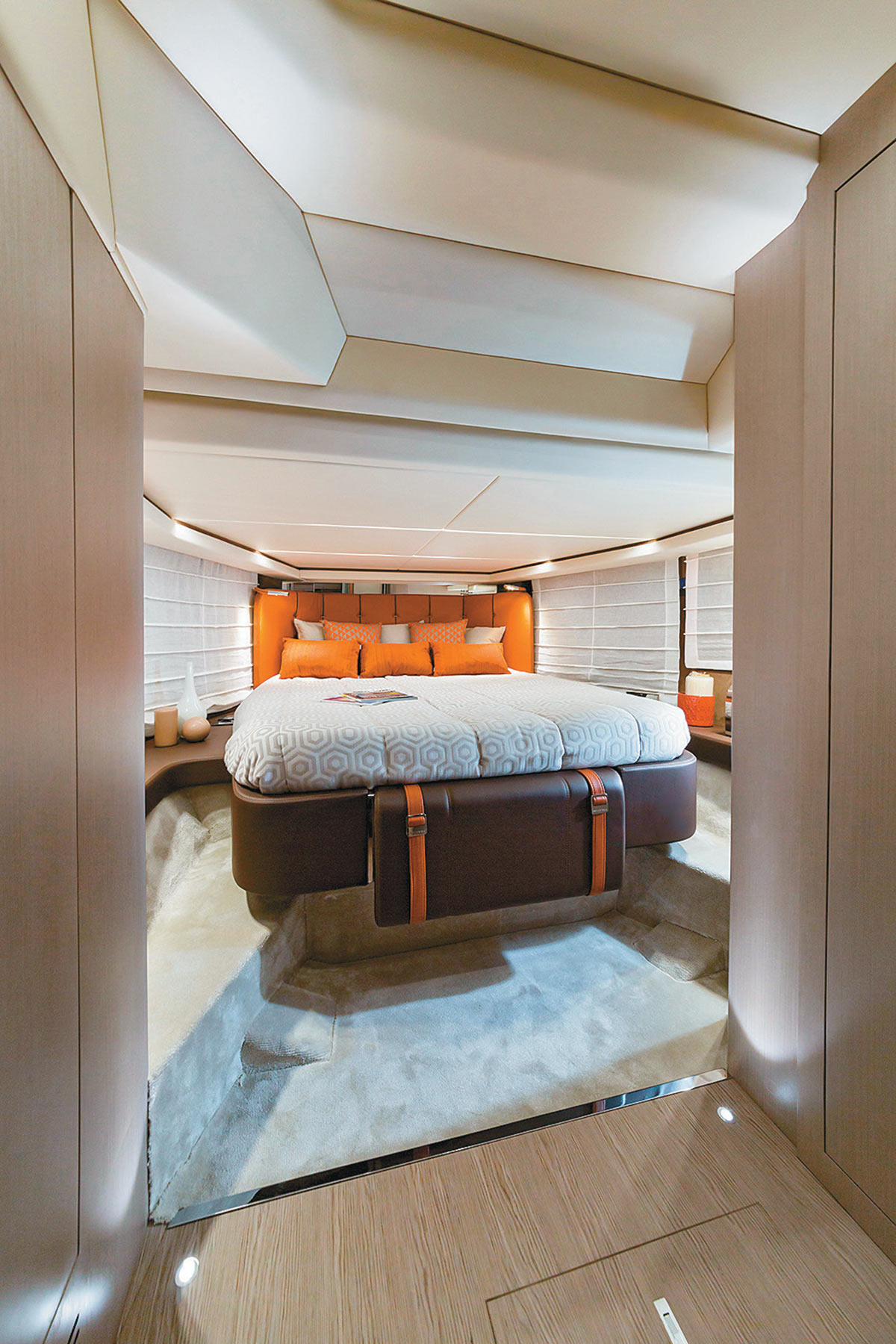
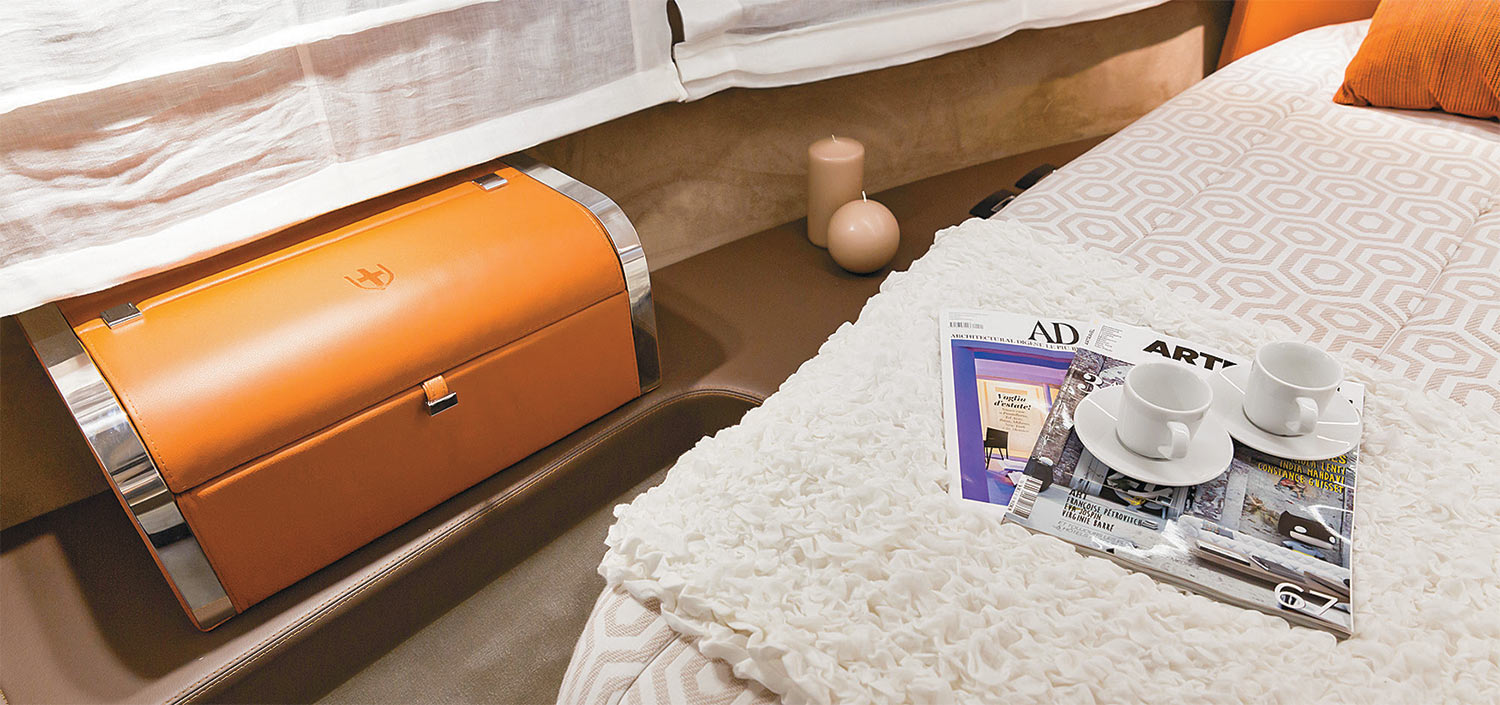

The Great Lakes
The New Grady-White Adventure 218
By Ryan Beaty
“With the typically unpredictable waters and weather on the Great Lakes, a seaworthy, safe boat with a top-performing hull is paramount. The 218 sits on Grady-White’s trademarked SeaV2 hull, the most awarded hull design in its class, and provides the exceptional ride that customers have come to know and love from Grady,” said Shelley Tubaugh, vice president of marketing. “With the sleek lines of the hull, matched with the classic curves of the new deck and windshield, and adding the spacious, comfortable cabin, the 218 is the perfect ‘home base on the water’ for all the activities the Great Lakes have to offer, regardless of the conditions.”
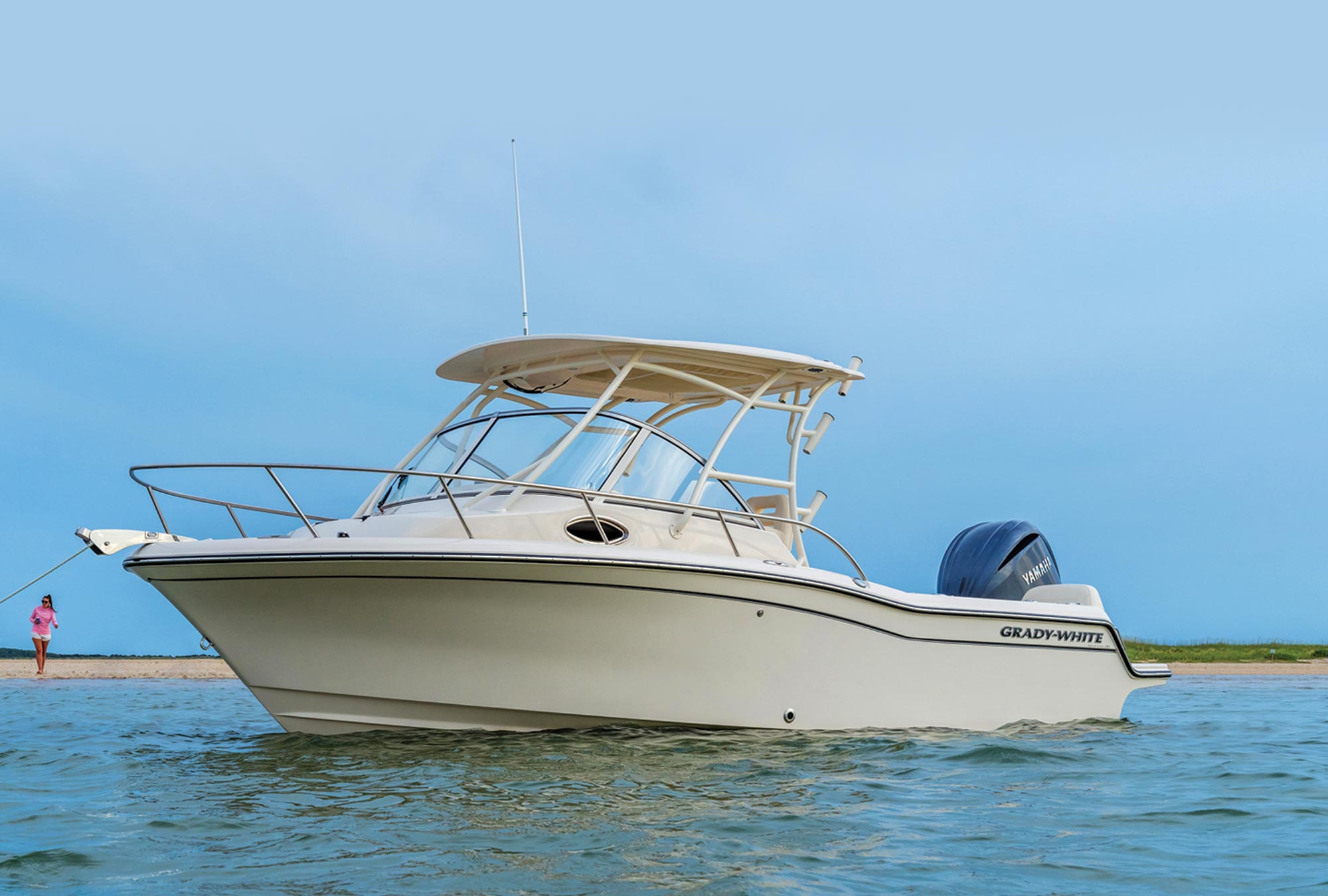

The Great Lakes
The New Grady-White Adventure 218
By Ryan Beaty
At the 1974 New York Boat Show, Grady-White unveiled one of the first walkaround cabin boats, a concept that quickly became a signature member of the company’s legendary lineup and a major design across almost all other boat manufacturers today. And now, nearly 50 years later, Grady-White proudly introduces the Adventure 218, stepping into a new era for boating. With a 21-foot walkaround cabin boat, the Adventure 218 honors the heritage of the classic Grady-White style that defined a generation of boaters.
“With the typically unpredictable waters and weather on the Great Lakes, a seaworthy, safe boat with a top-performing hull is paramount. The 218 sits on Grady-White’s trademarked SeaV2 hull, the most awarded hull design in its class, and provides the exceptional ride that customers have come to know and love from Grady,” said Shelley Tubaugh, vice president of marketing. “With the sleek lines of the hull, matched with the classic curves of the new deck and windshield, and adding the spacious, comfortable cabin, the 218 is the perfect ‘home base on the water’ for all the activities the Great Lakes have to offer, regardless of the conditions.”


Here are some excellent historical sites you can check out while boating on the Great Lakes.




With time and the currents of the lake, parts of the wreck, such as the ship’s steam boiler, became scattered. On June 8, 2001, this boiler was able to be returned to the main wreck site, thanks to the efforts of the Erickson family of Bayfield, Wis.; the State Historical Society of Wisconsin; and the Great Lakes Shipwreck Preservation Society (GLSPS).
However, the boiler shifted away from the Pretoria’s main wreck site again and had to be returned once more in 2016. Jack Decker, a prominent member of the GLSPS, was the co-project leader of the team that pulled the boiler back again and pinned it to the lake bottom.

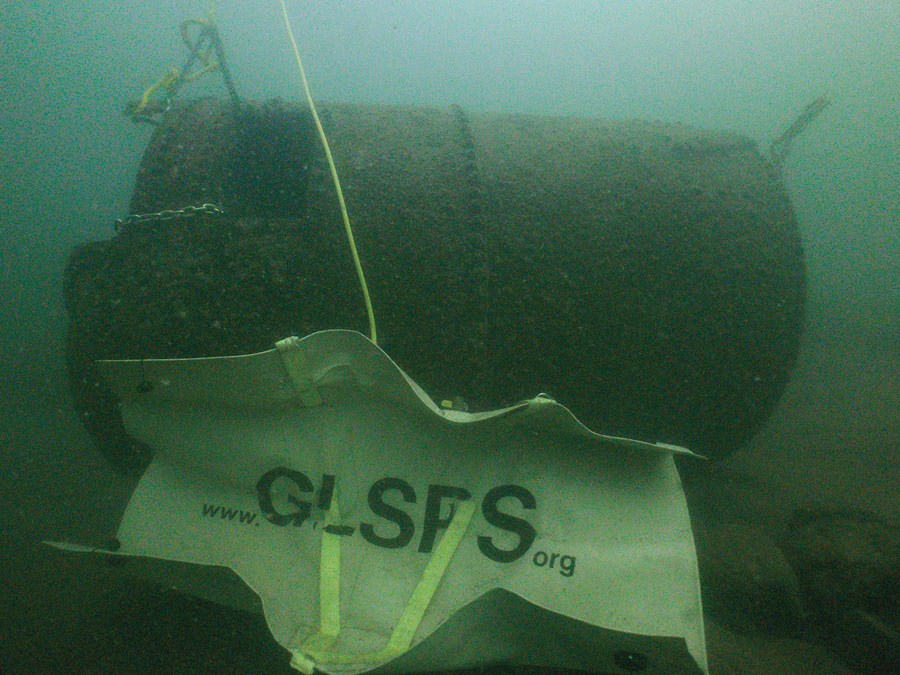


It’s no secret that the Great Lakes can be negatively impacted by pollution. One of the culprits for pollution is agriculture. Industrial agriculture affects all the Great Lakes, especially in areas with confined animal feedlot operations. Michigan, Wisconsin and Ohio all make heavy use of confined animal feedlots and there are also quite a few dairy farms in this general region as well.
Great Lakes Boating had a chance to sit down with Alaina Lawrence, the Climate, Food and Water Organizer at Clean Water Action Minnesota, to learn about the ways these agricultural practices are affecting the Great Lakes and what we can do to advocate for the implementation of more eco-friendly methods of farming.
arine life on the Great Lakes is always changing in one way or another, whether it’s seasons coming and going or changes in the environment. With winter on its way the Great Lakes will be transformed into a pretty rough and rugged environment. But marine life isn’t the only thing that’s shifting. Boating has seen its changes as well. It certainly looks very different today due to advancements in technology than it did in its beginning. We now have greater access to new electronics that are affordable and easy to use. Here we’ll take a look at how quickly boating technology is advancing and what’s in store for its future.

On the extreme end, Australia boasts a history of unmatched speed from a boat named The Spirit of Australia that was literally powered by a jet engine in the 1980s, allowing it to reach speeds of up to 317 mph. While most of us may not be piloting boats of that caliber, the fact is we now have options.
Most boats on the Great Lakes have speeds ranging between 35-69 mph. This is infinitely faster than anything that was on the water when engines were first invented. With new technology creating faster, quieter, and more affordable engines, more people are gaining an interest in boating. High speeds and a quiet ride make boating far easier and more enjoyable. Fishermen who don’t want to scare the fish with loud engines can especially appreciate the power of quiet speed and the technology that makes it happen.


Discover what your boat is missing

Electronics play a pivotal role when it comes to boating. Whether it’s a camera to keep an eye on your surroundings or a touchscreen that helps you control the functions of your boat, electronics of all types can be beneficial to a variety of boaters. Instead of using old methods for mapping or simply navigating the boat, electronic innovations help make life on the water easier as well as faster. Some seasoned skippers may use old boating equipment for fun, but you can’t go wrong with adding a few new electronics. With that in mind, these must-have electronics will make your boating experience even better.

Never be lost again with the Precision-9 Compass. With an accurate heading and rate-of-turn information, you’ll be able to get to where you need to without becoming one of Peter Pan’s lost boys. With an internal array of solid-state sensors constantly measuring motion you’ll be on top of anything that nervously sweats or flinches as you pass by.
An easily adjustable mounting bracket and single-cable connection allow you to set up this device without any help from the IT department. While this compass may not lead you to buried treasure, it will definitely get you out of a troublesome jam.
MSRP: $699
(www.apollolighting.com)

Casting It Forward
“I’ve learned that participating in our great sport offers many rewarding experiences above and beyond the act of catching fish,” said Panfil. “Things such as watching the sunrise on the water, seeing a bald eagle fly overhead, spending special time with friends and family, and getting to know your true self are just a few of the impactful events that can truly make a difference in one’s life. If we can make a difference or have a positive influence in a participant’s life by exposing them to the beauty and wonder of our great outdoors, then our mission is a success.”
Panfil started Cast It Forward after losing his 92-year-old father, Arthur K. Panfil, a veteran of the Korean War who was active in church and serving the community. “There are many reasons why I started Cast It Forward,” he explained. “But none more profound than to honor the memory of my father and to emulate the example he set for me. We may not be able to change the world, but we can try to make the part that we’re in a little better for others.”
And one of his favorite times to do so is autumn.

A nice fall walleye taken by 97-year-old Navy veteran Gene Wright on a recent fishing trip with Art Panfil’s Cast It Forward program.
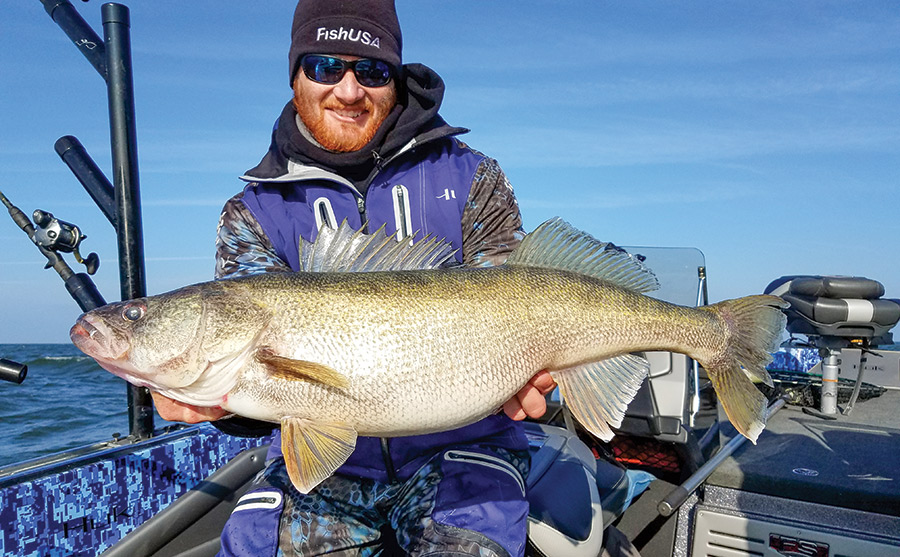
Across the Great Lakes, the season’s biggest walleyes are caught by anglers willing to brave the conditions each autumn.
rlando Metcalfe Poe had special skills, particularly in engineering. Born in 1832 on an Ohio farm, the “lighthouse man” gained recognition that continues today. Having excelled in math at West Point, he was appointed upon graduation to the Union Army’s Corps of Topographical Engineers in Detroit. It is here where his extensive survey work of the Great Lakes ended when the Civil War began and his duties pivoted to structures to aid the military and battlefield topographic maps. In 1865, with the war over, he became Engineer Secretary of the Lighthouse Board and was selected in 1870 as Chief Engineer of the Upper Great Lakes Lighthouse District.
This included responsibility for all lighthouse construction. Poe designed the “Poe Style” tower having a gentle taper from bottom to top and featuring graceful embellishments such as masonry gallery support corbels and arch topped windows rarely found on lighthouses.
Said to be one who did not skimp on costs, Poe’s Spectacle Reef Lighthouse at the treacherous waters of Lake Huron (eastern end of the Straits of Mackinac) was the most expensive construction project of its day.
Four years and eight lights later he was advising on engineering and security for four transcontinental railroad lines. Then in 1884 the ‘visionary engineer’ returned to the Great Lakes, designing massive locks for shipping. The well-known Au Sable Light Station–meaning “by sand” and preserved by the Park Service–is but one of his remarkable “towers” for guiding mariners along the shores of Lakes Superior, Michigan and Huron.
The 87-foot structure extends 23 feet underground and is anchored in bedrock. Constructed of wood, cast iron and Wisconsin Cream City bricks, it opened in 1874 and was automated in 1958. It was added to the National Register of Historic Places in 1978.
rlando Metcalfe Poe had special skills, particularly in engineering. Born in 1832 on an Ohio farm, the “lighthouse man” gained recognition that continues today. Having excelled in math at West Point, he was appointed upon graduation to the Union Army’s Corps of Topographical Engineers in Detroit. It is here where his extensive survey work of the Great Lakes ended when the Civil War began and his duties pivoted to structures to aid the military and battlefield topographic maps. In 1865, with the war over, he became Engineer Secretary of the Lighthouse Board and was selected in 1870 as Chief Engineer of the Upper Great Lakes Lighthouse District.
This included responsibility for all lighthouse construction. Poe designed the “Poe Style” tower having a gentle taper from bottom to top and featuring graceful embellishments such as masonry gallery support corbels and arch topped windows rarely found on lighthouses.
Said to be one who did not skimp on costs, Poe’s Spectacle Reef Lighthouse at the treacherous waters of Lake Huron (eastern end of the Straits of Mackinac) was the most expensive construction project of its day.
Four years and eight lights later he was advising on engineering and security for four transcontinental railroad lines. Then in 1884 the ‘visionary engineer’ returned to the Great Lakes, designing massive locks for shipping. The well-known Au Sable Light Station–meaning “by sand” and preserved by the Park Service–is but one of his remarkable “towers” for guiding mariners along the shores of Lakes Superior, Michigan and Huron.
The 87-foot structure extends 23 feet underground and is anchored in bedrock. Constructed of wood, cast iron and Wisconsin Cream City bricks, it opened in 1874 and was automated in 1958. It was added to the National Register of Historic Places in 1978.
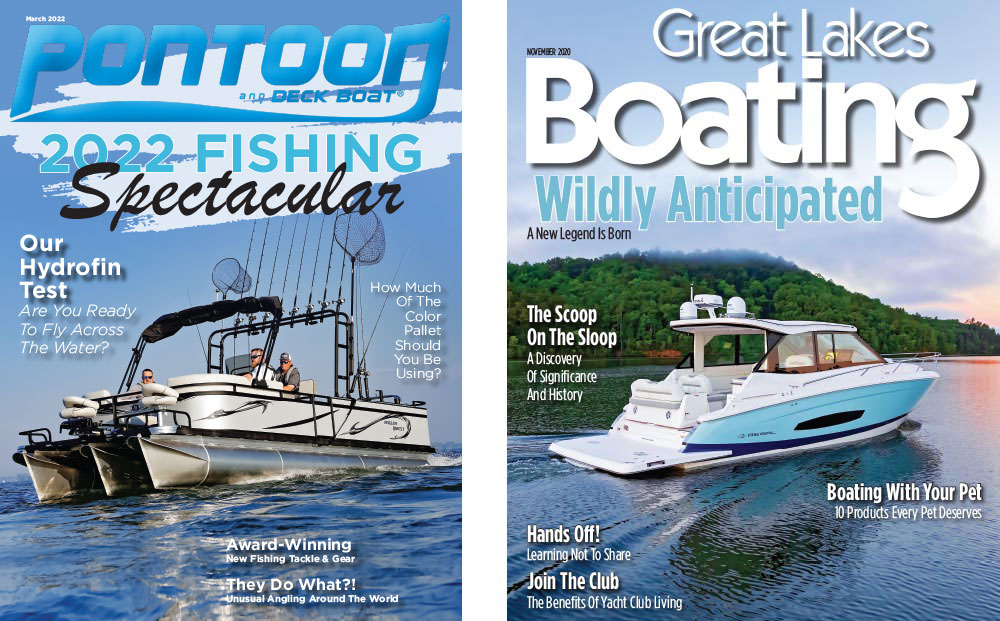
www.pdbmagazine.com
www.facebook.com/PDBMagazine
www.twitter.com/PDBMag
www.instagram.com/PDBMagazine
GREAT LAKES BOATING
www.greatlakesboating.com
www.facebook.com/glboating
www.instagram.com/greatlakesboating

